Abstract
Etiolated maize and soybean seedlings were grown for several days in atmospheres enriched with O18. Hydroxyproline subsequently isolated from the seedlings by column and thin-layer chromatography was labeled with excess O18, but proline was not. Control experiments in which seedlings were grown in H2O18 and unlabeled atmospheres demonstrated that neither proline nor hydroxyproline was labeled with excess O18. It was concluded that oxygen fixation is an essential feature of hydroxyproline biosynthesis in these seedlings, and that the hydroxyl oxygen atom in hydroxyproline is derived from molecular oxygen and not from water; similar results have been reported previously for sycamore cell suspensions.
Full text
PDF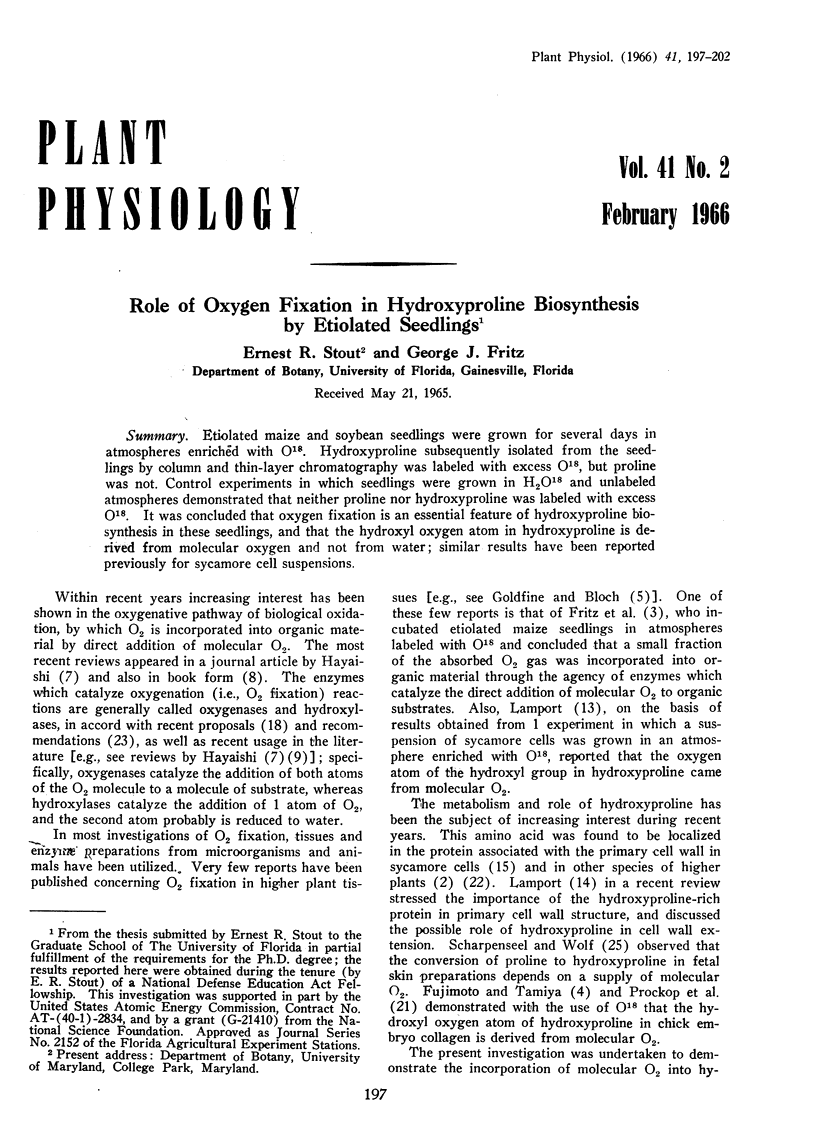
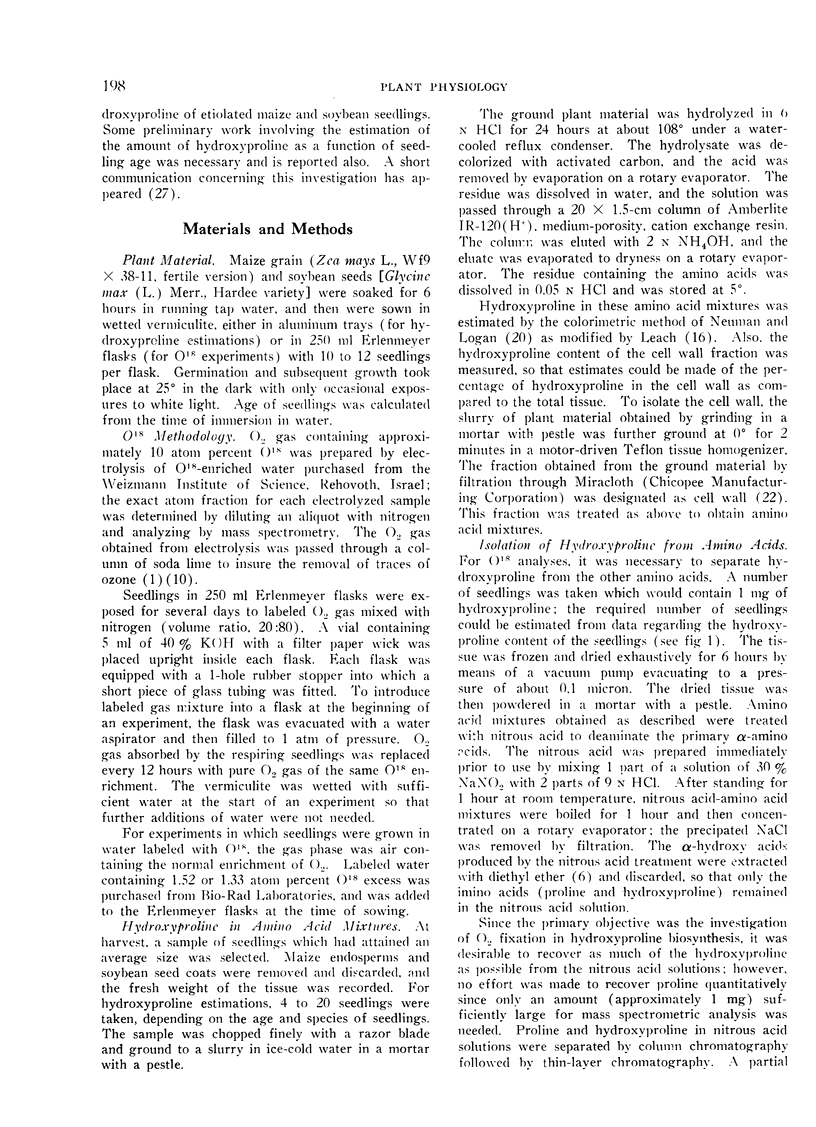
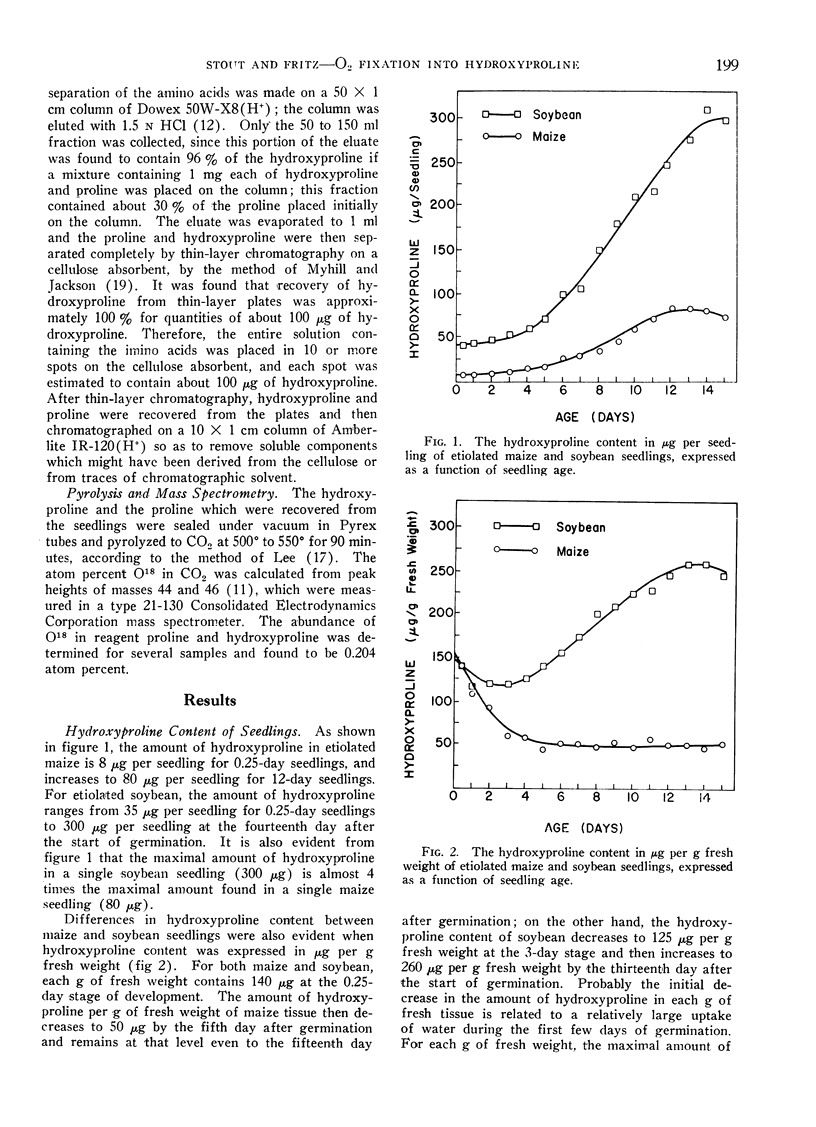
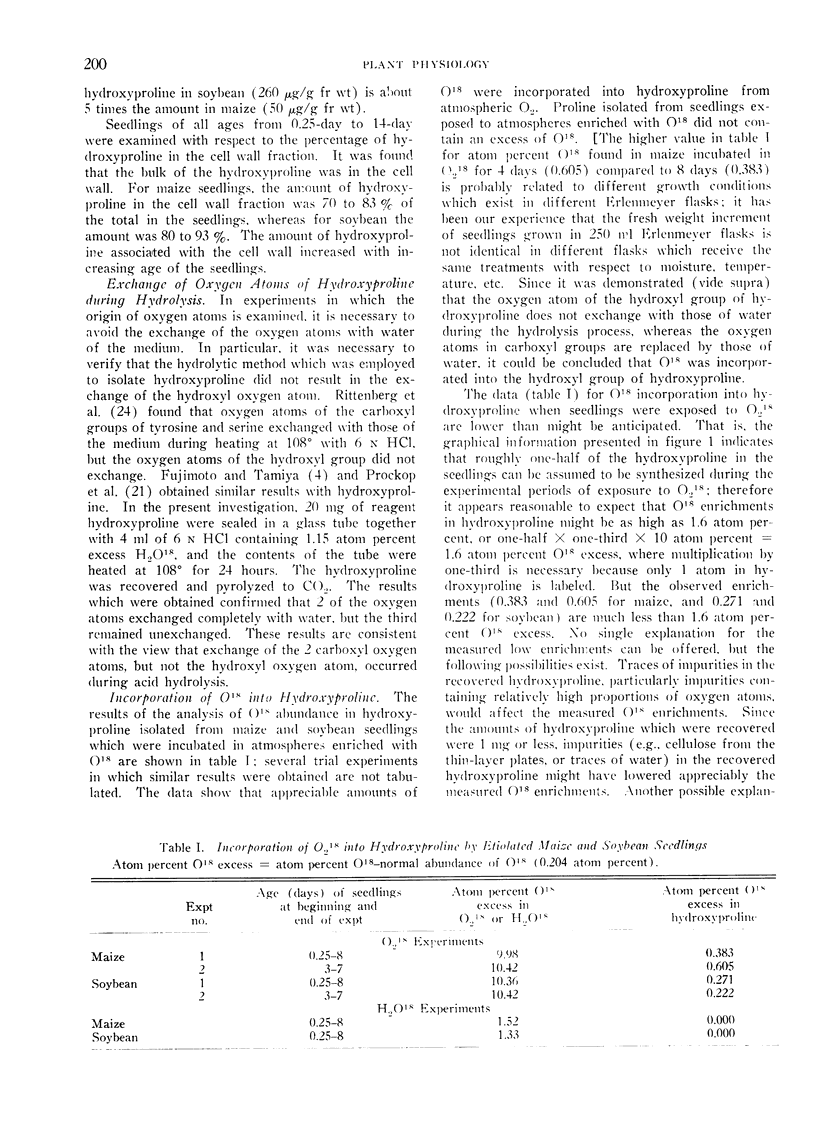
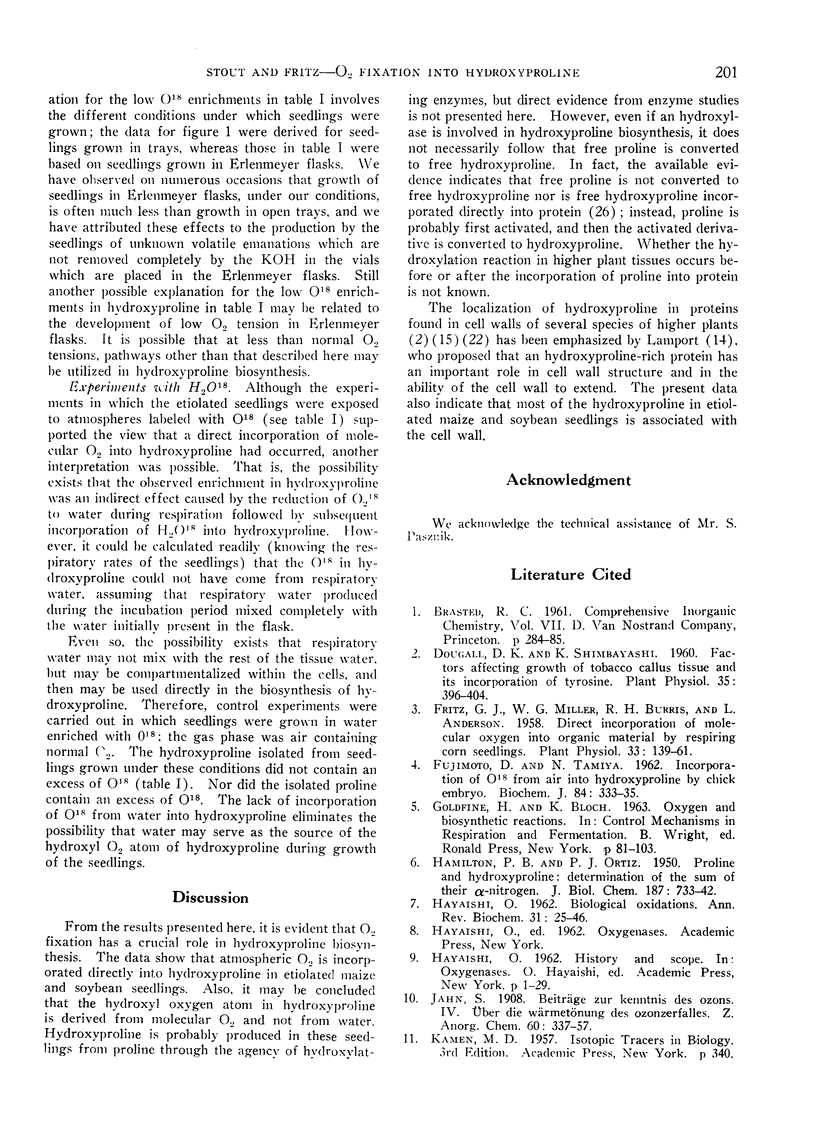
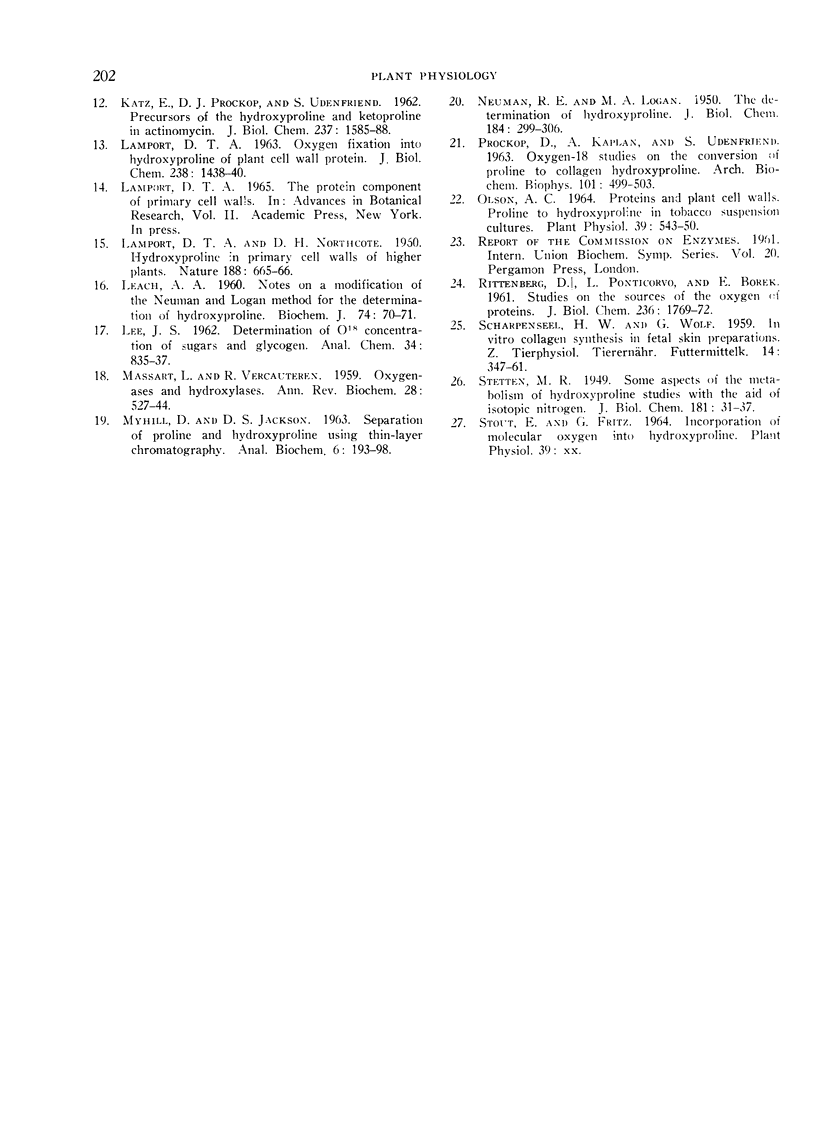
Selected References
These references are in PubMed. This may not be the complete list of references from this article.
- Dougall D. K., Shimbayashi K. Factors Affecting Growth of Tobacco Callus Tissue and Its Incorporation of Tyrosine. Plant Physiol. 1960 May;35(3):396–404. doi: 10.1104/pp.35.3.396. [DOI] [PMC free article] [PubMed] [Google Scholar]
- Fried M., Noggle J. C. Multiple Site Uptake of Individual Cations by Roots as Affected by Hydrogen Ion. Plant Physiol. 1958 Mar;33(2):139–144. doi: 10.1104/pp.33.2.139. [DOI] [PMC free article] [PubMed] [Google Scholar]
- Fujimoto D., Tamiya N. Incorporation of O from air into hydroxyproline by chick embryo. Biochem J. 1962 Aug;84(2):333–335. doi: 10.1042/bj0840333. [DOI] [PMC free article] [PubMed] [Google Scholar]
- HAMILTON P. B., ORTIZ P. J. Proline and hydroxyproline; determination of the sum of their alpha-nitrogen. J Biol Chem. 1950 Dec;187(2):733–742. [PubMed] [Google Scholar]
- HAYAISHI O. Biological oxidations. Annu Rev Biochem. 1962;31:25–46. doi: 10.1146/annurev.bi.31.070162.000325. [DOI] [PubMed] [Google Scholar]
- KATZ E., PROCKOP D. J., UNDENFRIEND S. Precursors of the hydroxyproline and ketoproline in actinomycin. J Biol Chem. 1962 May;237:1585–1588. [PubMed] [Google Scholar]
- LAMPORT D. T. Oxygen fixation into hydroxyproline of plant cell wall protein. J Biol Chem. 1963 Apr;238:1438–1440. [PubMed] [Google Scholar]
- LEACH A. A. Notes on a modification of the Neuman and Logan method for the determination of the hydroxyproline. Biochem J. 1960 Jan;74:70–71. doi: 10.1042/bj0740070. [DOI] [PMC free article] [PubMed] [Google Scholar]
- MYHILL D., JACKSON D. S. SEPARATION OF PROLINE AND HYDROXYPROLINE USING THIN-LAYER CHROMATOGRAPHY. Anal Biochem. 1963 Aug;6:193–198. doi: 10.1016/0003-2697(63)90110-6. [DOI] [PubMed] [Google Scholar]
- Olson A. C. Proteins and Plant Cell Walls. Proline to Hydroxyproline in Tobacco Suspension Cultures. Plant Physiol. 1964 Jul;39(4):543–550. doi: 10.1104/pp.39.4.543. [DOI] [PMC free article] [PubMed] [Google Scholar]
- PROCKOP D., KAPLAN A., UDENFRIEND S. Oxygen-18 studies on the conversion of proline to collagen hydroxyproline. Arch Biochem Biophys. 1963 Jun;101:499–503. doi: 10.1016/0003-9861(63)90509-5. [DOI] [PubMed] [Google Scholar]
- RITTENBERG D., PONTICORVO L., BOREK E. Studies on the sources of the oxygen of proteins. J Biol Chem. 1961 Jun;236:1769–1772. [PubMed] [Google Scholar]


